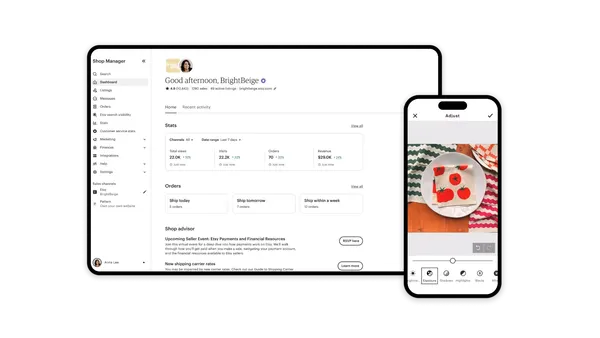Dive Brief:
- April brought the first signs of slowing growth to online inflation, according to Adobe’s Digital Price Index, which found online prices dropped 0.5% month to month but were still up 2.9% year over year.
- Prices fell across more than half of the 18 product categories tracked by Adobe on a monthly basis. “As the cost of borrowing and economic uncertainty rises for consumers, we are beginning to see the early impact on both online inflation and spend,” Patrick Brown, vice president of growth marketing and insights at Adobe, said in a press release.
- The federal Consumer Price Index showed prices rose 0.3% month to month across the economy in April, down from the 1.2% in March. Year over year, April prices were up 8.3%.
Dive Insight:
Any relief from inflation is a boon for consumers. As for retailers and brands, even the largest have been navigating cost inflation throughout the enterprise — in fuel, product, inputs and freight, among other areas.
Margins and profits have held or increased for many in recent months even as costs increased, as companies raise prices on their customers. However, some of the latest quarterly releases have brought disappointing numbers, with executives citing inflation-wary consumers among other challenges in the macro environment.
Neil Saunders, managing director with GlobalData, called the April CPI’s year-over-year rise “punishingly high” and “a threat to both consumer spending and consumer confidence."
Saunders also pointed out in emailed comments that April of 2021 is when prices began their steep upward journey, meaning the yearly comparison masks the full magnitude of inflation. On a two-year basis, prices were up 12.8% in April, Saunders noted.
Consumer demand still appears to be fairly strong overall. Earnest Research found that consumer spending rose 3% year over year in April, which the research firm noted was a re-acceleration from March. Breaking down those numbers, in-store spending was up 7% while online spending fell 3% (which could explain the price decreases).
The growth in spending didn’t apply to everyone. According to Earnest Research, spending mostly declined year over year for retail, except for fashion resale, and mass merchants like big-box retailers and warehouse clubs, as well as pet supply stores and supermarkets.
Inflation is also changing how and when consumers spend. In March, apparel inflation hit a 42-year record high of 6.8%, driven by increases in the cost of textiles, transportation and wages, according to Coresight Research. The research firm found that consumers expect to buy fewer items, seek out more discounts and delay non-grocery spending to cope with higher prices.
Saunders pointed out that many households “have the firepower of high savings and continue to benefit from a reduction in service spend on things like travel and vacations as pandemic trends have still not completely unwound.”
But, Saunders also noted that inflation is affecting, and spooking, those of middle and low incomes.
“In our data we are seeing multiple early warning signs,” Saunders said. “Consumer credit and debt is expanding. Volumes of products purchased, especially in discretionary categories like apparel, is falling. There is a reduced level of impulse buying, especially online."












